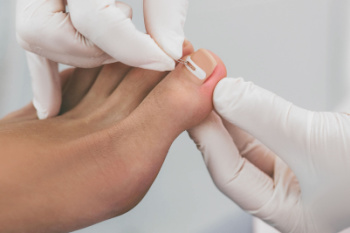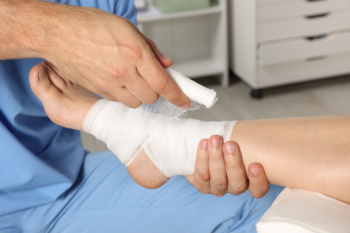
Balance exercises can play a vital role in maintaining stability and preventing falls, especially as people age. Poor balance often stems from weakened muscles in the feet, ankles, and toes, which are key areas for maintaining a steady gait. Declining strength can make daily activities like walking or standing more challenging, which increases the risk of falls. Regular balance exercises that target these areas, like heel raises or toe taps, can enhance muscle coordination and foot control. These exercises not only strengthen the lower body but also improve proprioception, or the body’s awareness of its position in space. A podiatrist can evaluate your feet and ankles for issues that may contribute to balance problems, such as deformities, joint instability, or conditions like arthritis. This foot doctor also can recommend specific strategies to improve foot and ankle strength and reduce your risk of falls. If you are exhibiting balance problems, it is suggested that you schedule an appointment with a podiatrist for an exam that may help to avoid falling.
Preventing falls among the elderly is very important. If you are older and have fallen or fear that you are prone to falling, consult with one of our podiatrists from Graff Foot, Ankle and Wound Care. Our doctors will assess your condition and provide you with quality advice and care.
Every 11 seconds, an elderly American is being treated in an emergency room for a fall related injury. Falls are the leading cause of head and hip injuries for those 65 and older. Due to decreases in strength, balance, senses, and lack of awareness, elderly persons are very susceptible to falling. Thankfully, there are a number of things older persons can do to prevent falls.
How to Prevent Falls
Some effective methods that older persons can do to prevent falls include:
- Enrolling in strength and balance exercise program to increase balance and strength
- Periodically having your sight and hearing checked
- Discuss any medications you have with a doctor to see if it increases the risk of falling
- Clearing the house of falling hazards and installing devices like grab bars and railings
- Utilizing a walker or cane
- Wearing shoes that provide good support and cushioning
- Talking to family members about falling and increasing awareness
Falling can be a traumatic and embarrassing experience for elderly persons; this can make them less willing to leave the house, and less willing to talk to someone about their fears of falling. Doing such things, however, will increase the likelihood of tripping or losing one’s balance. Knowing the causes of falling and how to prevent them is the best way to mitigate the risk of serious injury.
If you have any questions, please feel free to contact our offices located in Plano, Dallas, Prosper, Allen, Irving, Garland, Frisco, and Coppell, TX . We offer the newest diagnostic and treatment technologies for all your foot care needs.





